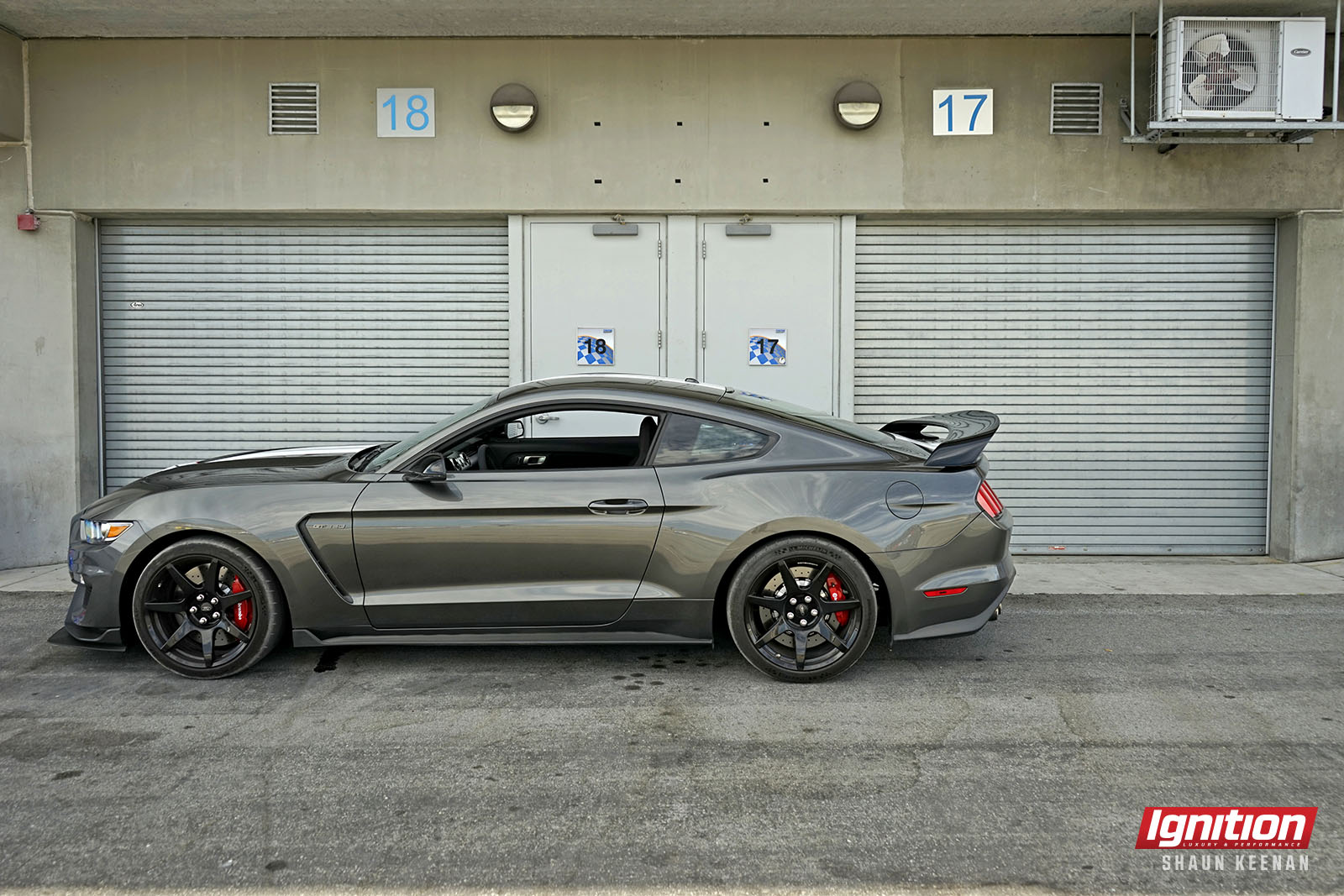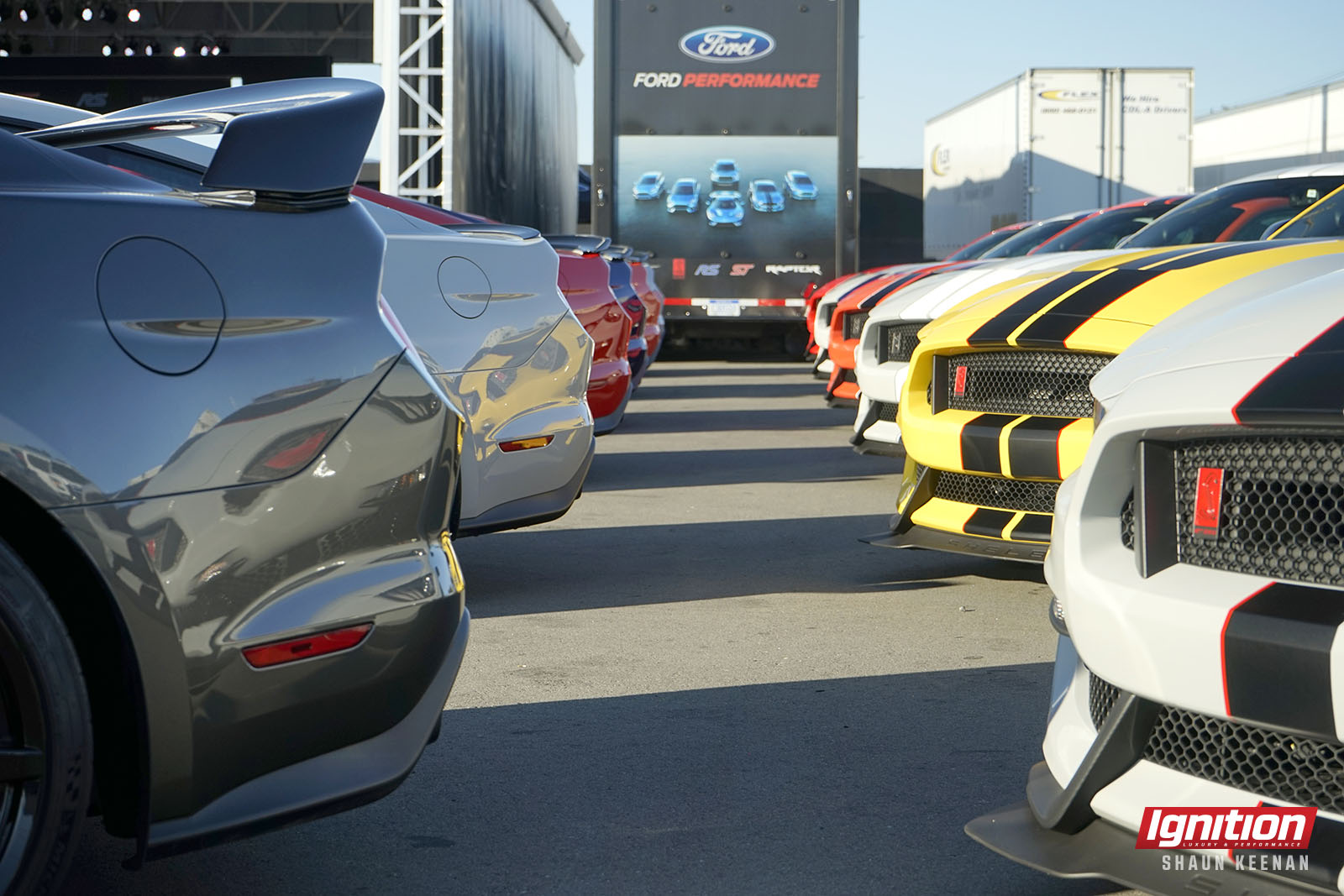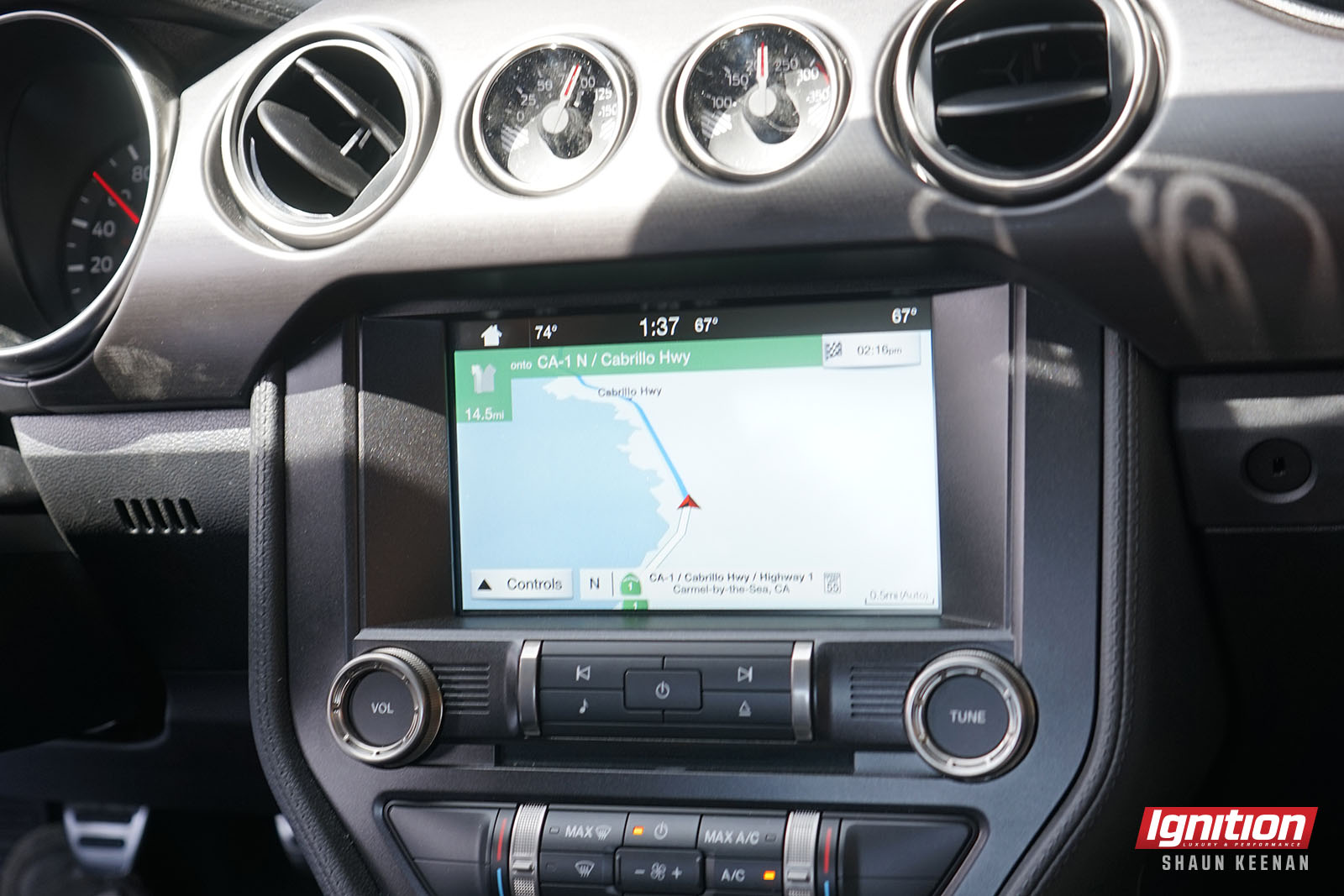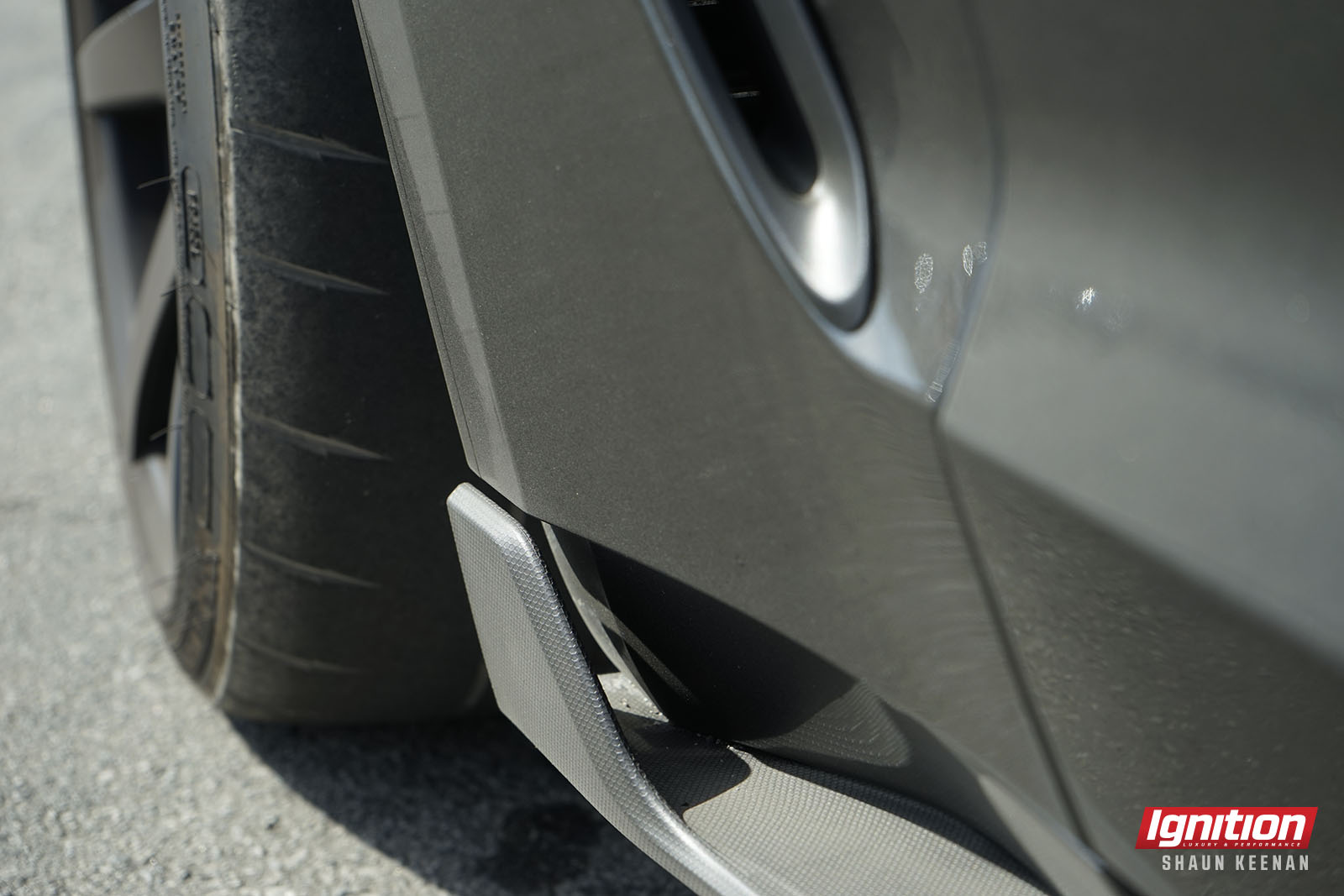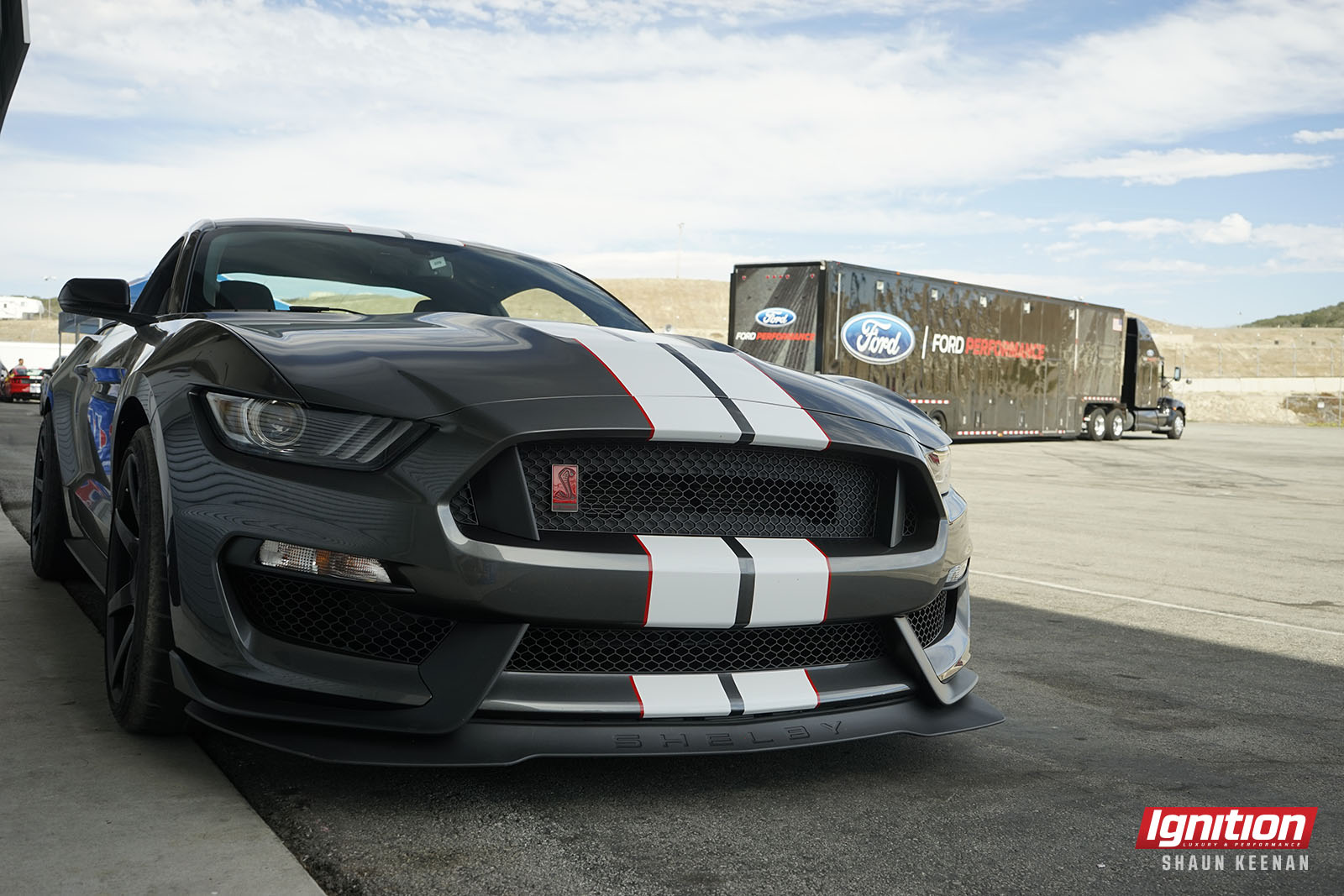
Carroll Shelby would be proud. No question. Were the Godfather of factory performance still here to take one of these out for a rip, he’d be impressed. Undoubtedly. Perhaps even in tears. They’re that good. The 2016 Mustang Shelby GT350 and GT350R are not only the most powerful naturally-aspirated ’Stangs Ford has ever built, they are the best. Full stop.
Shelby, as you probably know, is infamous, and he’s been involved with some of America’s most famous muscle and performance cars since Shelby American was formed in 1962. Does the Cobra 427 S/C sound familiar? The AC Shelby Daytona Coupe? How about the Series 1? Shelby GT? GR1? Dodge Viper? The Super Snake? No!?! Go ahead and slither back under your rock, will you?
The ex-racer turned factory tuner was 89 when he died on my birthday in 2012 – the same year I got my first taste of Shelby’s prodigious performance with track tests of the then-new 2012 Ford Mustang Shelby GT500 and Boss 302 at Calabogie Motorsports Park near Ottawa. The latter was considered a benchmark for these latest Shelby models.
The new version pays homage to the original 1965 Shelby Mustang GT350, and not only builds on Shelby’s original idea of transforming a great every-day car into a dominant road racer, but takes it to even greater heights with the “R” version. Like the ’65 Shelby GT350 Competition Coupe, this thing is practically ready to race.
To the uninitiated, these cars are not built by Shelby American, Inc. in Las Vegas, but rather Ford Performance in Flat Rock, Michigan. Shelby American (as well as Roush Performance) are both secondary manufacturers. They start with basically the complete Ford platform, modify and tune it extensively and then re-VIN the car before it can go on sale. The Fords, however, are fully designed, engineered and built to spec in house by Ford Performance. Both methods are turn-key, and both offer full warranties.
The targets for this car were to have a lightweight engine with at least 500 horsepower, an 8,500 RPM redline and a broad, free-spinning powerband. Hence, the heart of the 2016 GT350 and GT350R is a modified version of Ford’s naturally-aspirated aluminum Coyote V8. It starts off as the same engine that goes into the Mustang GT, but the block is bored two over to 5.2 litres and fitted with a flat-plane crank to produce 526 horsepower and 429 lb-ft of torque that goes through a Tremec six-speed manual transmission. The engine is lighter than the one in the Ferrari 458, and the transmission is 4.5 kilos lighter than that in the Mustang GT.
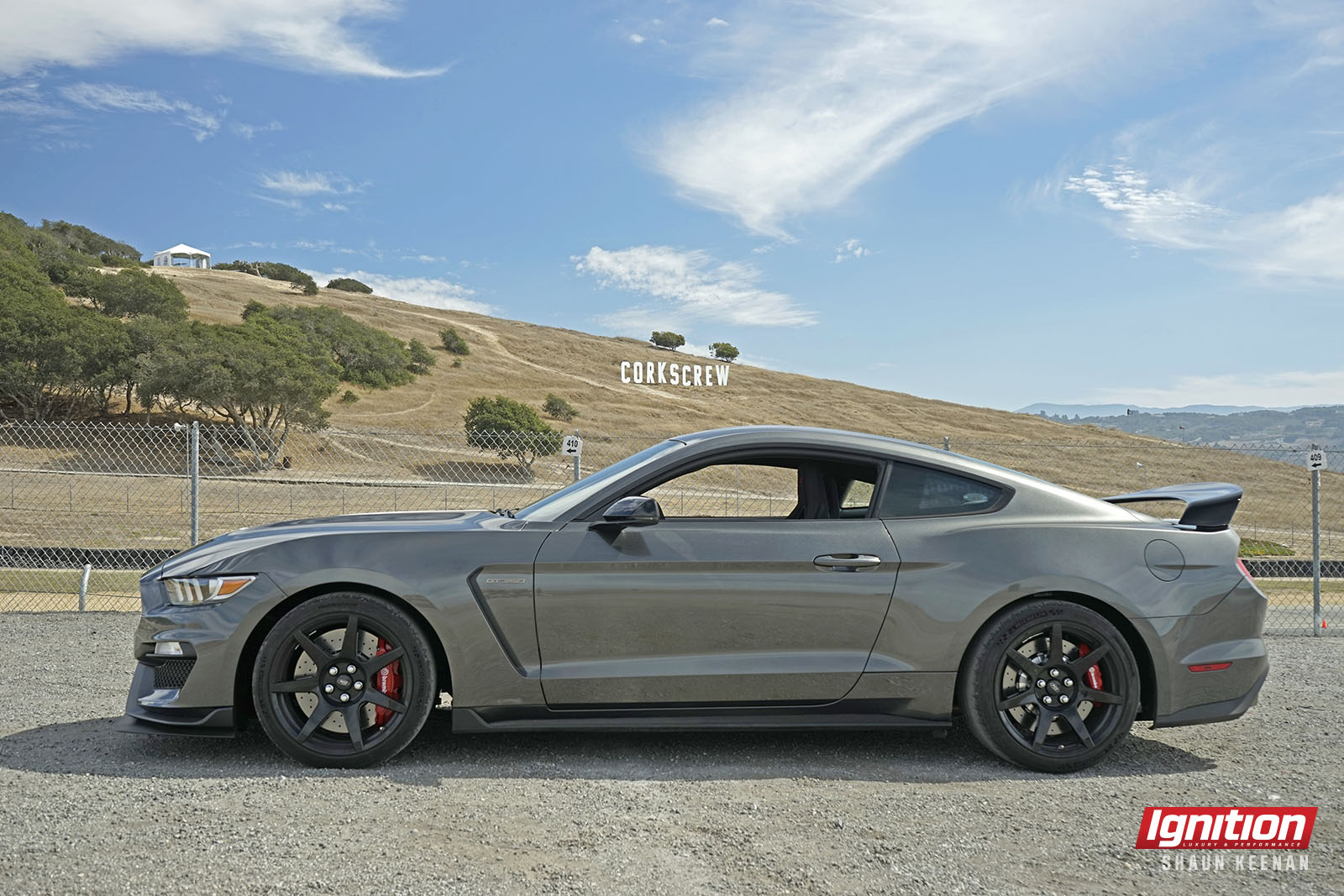


What’s so special about the flat-plane crank? Ford Performance engineer Eric Ladner explains: “The crank pins are arranged in a single plane, which sets up a different firing order. We get even firing, even pulses and better breathing, resulting in better performance. Its balance also allows us to use smaller counterweights, which reduces weight and rotational inertia, so it revs faster.”
Other improvements include forged aluminum pistons with low-tension rings, forged steel connecting rods with a fracture split cap, a new cylinder head with larger valves, increased breathability and more oil capacity – the pan, baffle, pickup tube, windage try and gasket have been combined into a single composite assembly that can hold two more quarts than the pan in the 5.0, yet is about 20 per cent.
“The piston dome has cutouts for the valve pockets and a pent roof, which gives us a 12:1 compression ratio.” Ladner continues, “But to really maximize this we moved them out, so the valve positions and sizes are completely new and unique. The cylinder heads are CNC-machined and the ports have been optimized using computation fluid dynamics. We’ve also machined off some unnecessary material to reduce weight.”
Stronger, larger half shafts beef up the powertrain even more, and a brand new dual mass clutch and flywheel assembly were designed to withstand the high heat and stress of track use. The flywheel is a non-damp system, which works with the clutch to provide a smoother driving experience. The clutch feels perfectly weighted; and the two elements combine to provide a very responsive, low inertia system that helps get to the redline as fast as possible. As for the Torsen rear differential, it uses a unique internal differential gear set with a bias ratio, which helps transfer the most torque to the wheel with the best grip on the track.
The GT350R wheels are truly special – the first carbon fibre wheels to be offered on a production car — and a huge performance enhancement for this car! They’re very light and very strong. “It isn’t only saving weight, but also inertia,” explains Brian Zorman, Ford Performance Engineer, citing 40 percent less inertia and 60 per cent reduction in unsprung weight. “When you’re accelerating these wheels, we save 22.7 kilograms (50 lbs.) versus the aluminum wheels. They’re also extremely reliable and robust.” They’re not cheap though, and cost roughly $3,500 per corner according to Jamal Hameedi, Ford Performance Chief Engineer, compared to roughly $1,800 per aluminum wheel, which come standard on the GT350.
In either case, the wheels are fitted with a bespoke Brembo braking system comprised of two-piece, cross-drilled, directional vane rotors — sized 394 mm diameter in the front and 380 mm in the rear – that are specific to the left and right sides of the car, and solid aluminum calipers to maximize feedback as well as stopping.
The wheels are paired with Ford’s MagneRide suspension (standard on GT350R and available on GT350) that monitors and automatically adjusts itself thousands of times per second to provide a reasonable street ride and ultimate racetrack performance. “The fluid contains metallic particles and we can change its viscosity by adjusting the [electric] current into the damper unit,” says Brent Clark, yet another Ford Performance Engineer. “This adjusts the ride, and we can also tune it to help manage the vehicle’s roll and pitch under braking and acceleration.
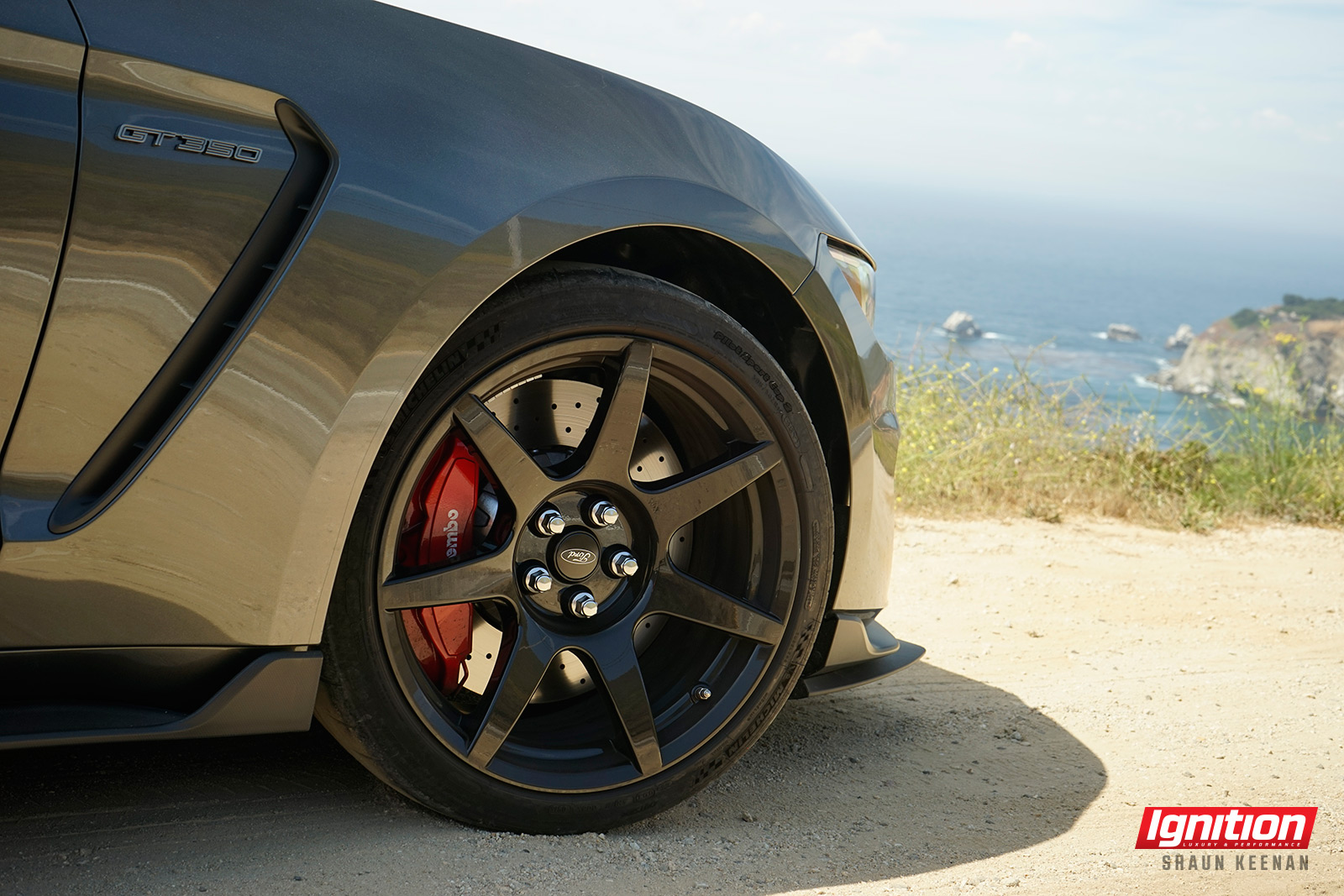
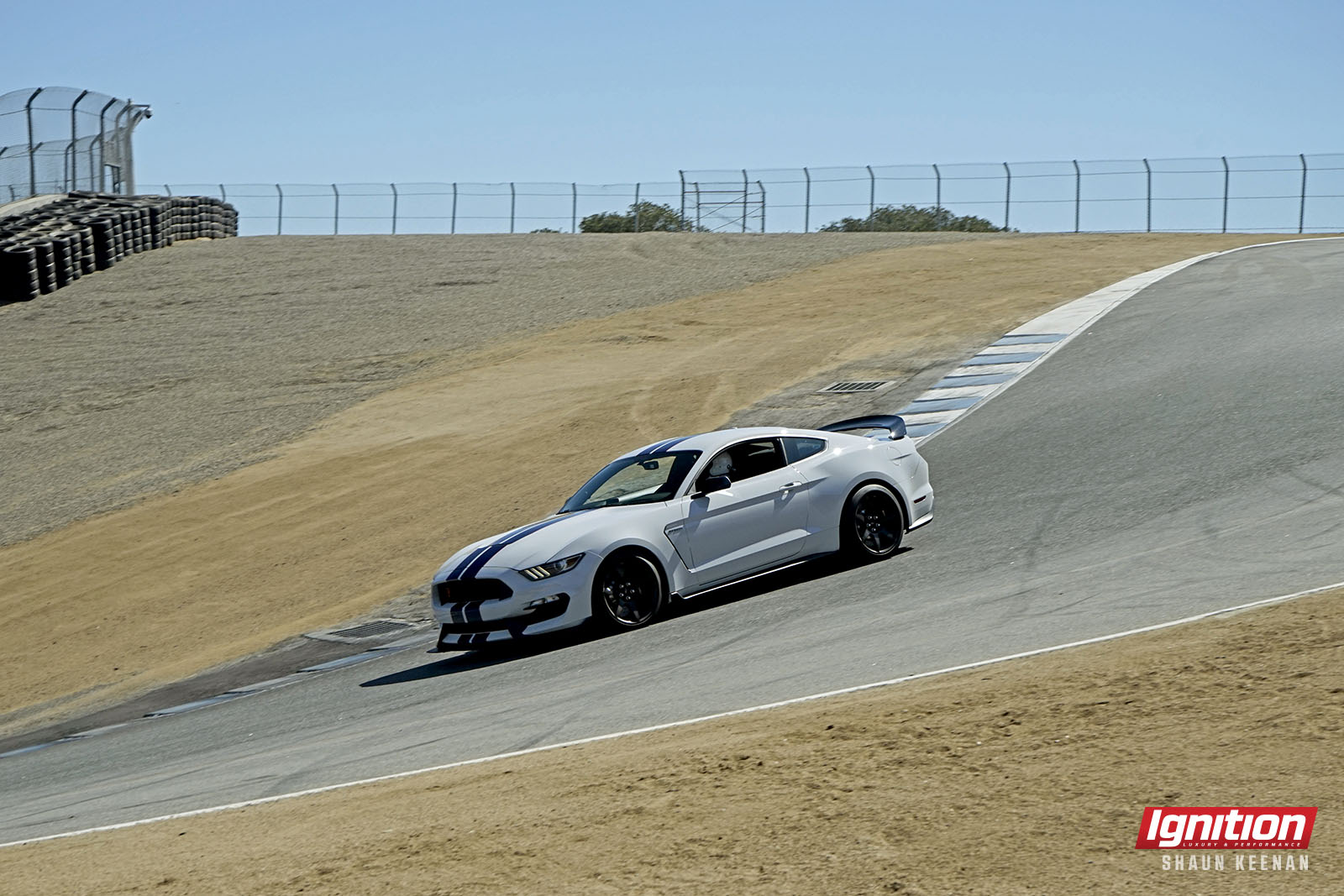
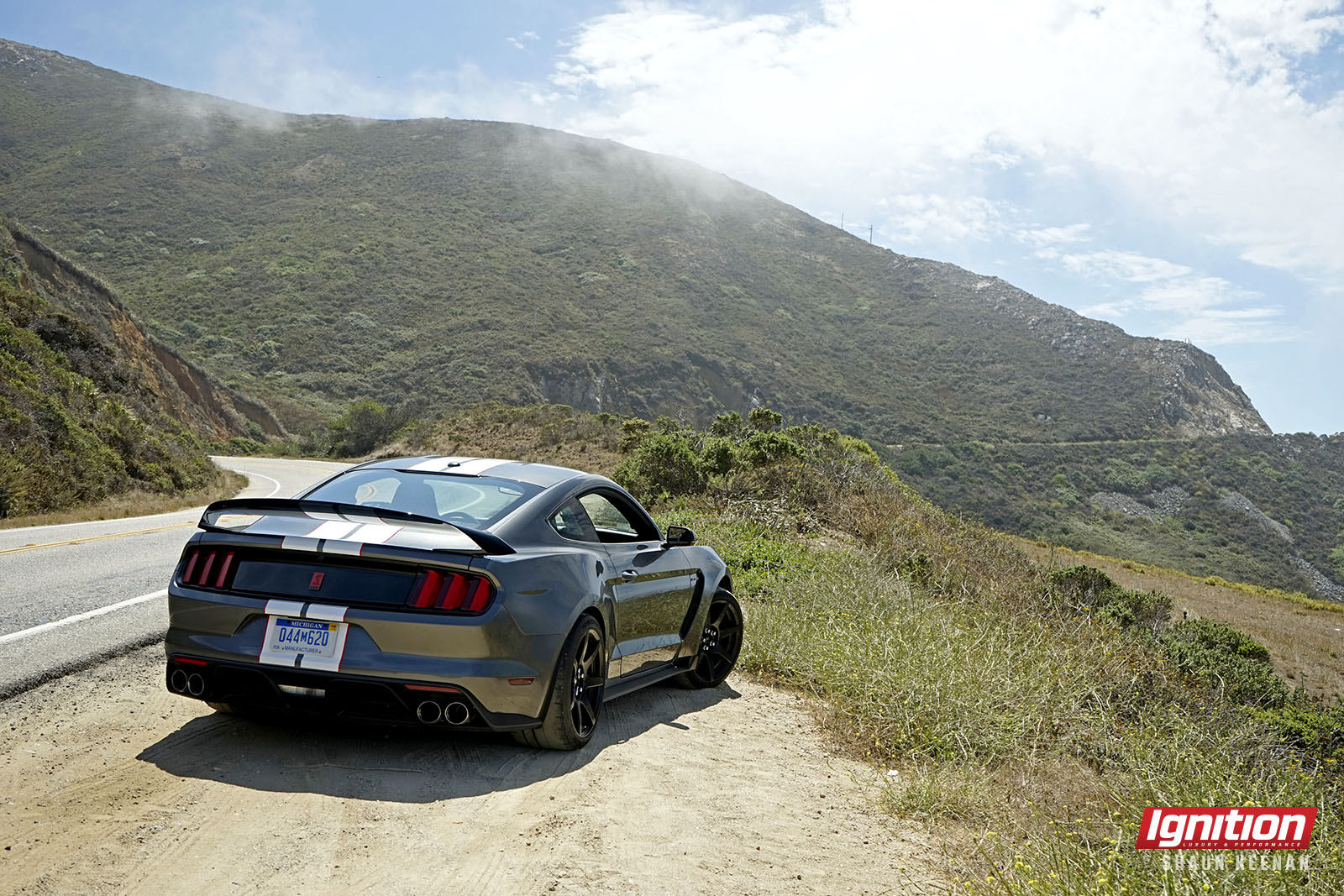
"Our attention to detail drove us all the way down to which way the springs coiled; therefore, requiring new lower control arms. This racer was designed, engineered and built so the springs, sway bars and dampers work together as one finely tuned system. We also added new lightweight chassis components and a set of Michelin Pilot Super Sport tires.”
Cooling is of paramount importance on a vehicle such as this. “The only way to get rid of [the heat],” Zorman chimes in, “is with miniature coolers. On the front of the vehicle we have a transmission cooler. We’ve mounted the rear differential cooler and pump in the rear, which saves on weight of coolant, routing and hoses. It has a special diff user that pushes air underneath the vehicle through the radiator and out the back of the rear fascia so we don’t have to worry about debris getting caught in the radiator in the front.”
The bespoke nature of this car continues. In fact, every component and shape has been optimized to perform on the world’s best race tracks. The aerodynamics package drives this point home, and is as aggressive-looking as it is functional “The underbody belly pan is the foundation for our front downforce,” says John Pfeiffer, Ford Performance Engineer. “It’s nice and flat to create that negative pressure so it sucks the car to the road... [and] we made this R splitter a little larger to create a bit more downforce.”
An aluminum front bumper bar (traditionally it is steel) also helps shift the weight to the rear where the keen observer will notice the spoiler is actually an airfoil. “We needed to balance out the greater downforce from the larger splitter in the front,” Pfeiffer elaborates. “[It’s] like an upside-down airplane wing. Instead of lifting off the ground it brings the car down. That creates a good balance and a bias. So at speed the back end just sticks through the turns.”
Every component is has been painstakingly designed to work in total harmony. The wide aluminum front fenders, the unique and more aggressively raked aluminum hood, front and rear fascias, splitter, rockers and rear valance with integrated diffuser all function as a team – an all-star team if there ever was one. Other small but important aero features, for example, include front and rear kick-ups that aim air at the front brakes and the tunnel where the drive shaft and exhaust pipes are to cool them.
Following its week in the spotlight during Monterey Car Week where the GT350 enjoyed its 50th anniversary, Ford chose the nearby Mazda Raceway Laguna Seca raceway for its media launch event.
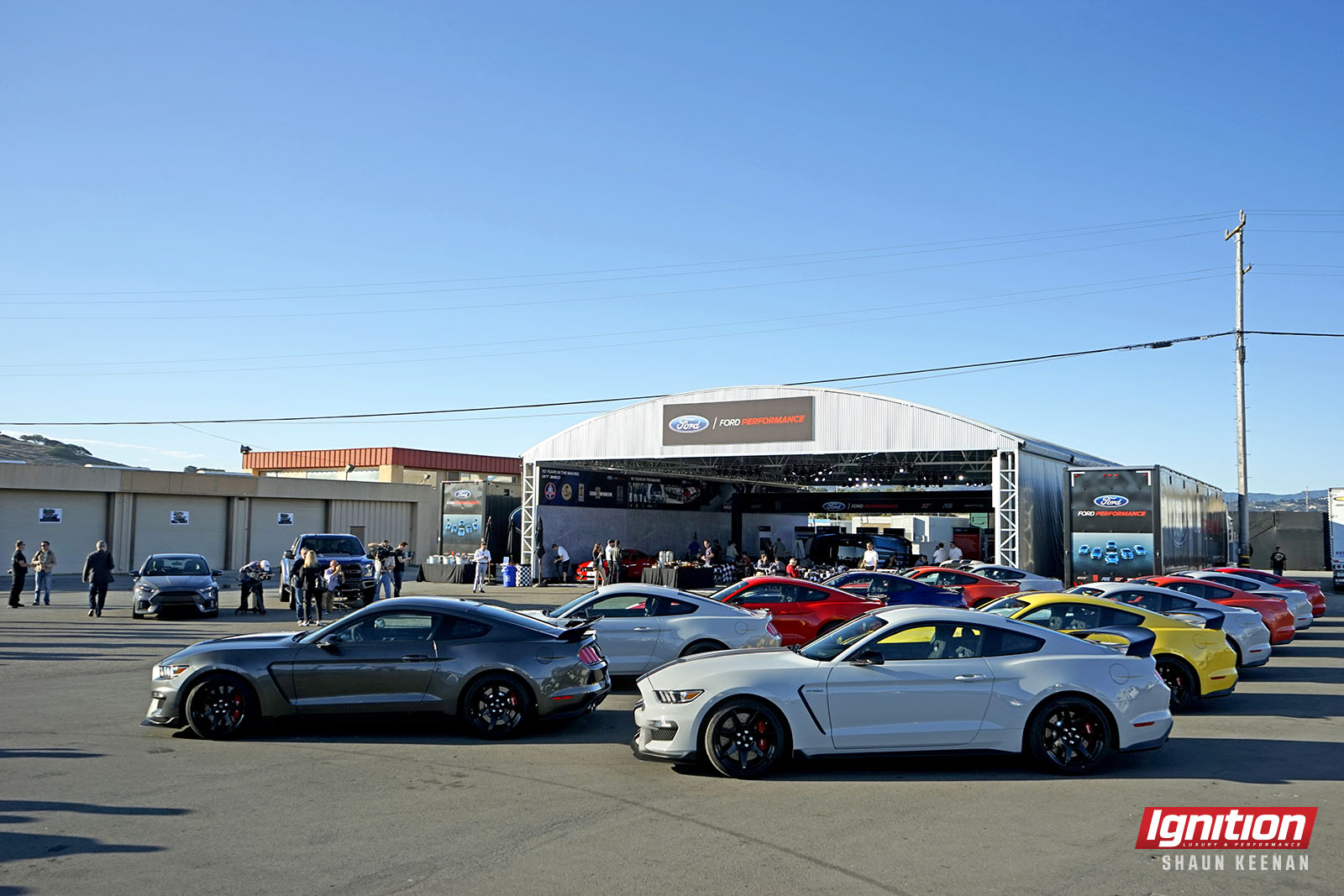
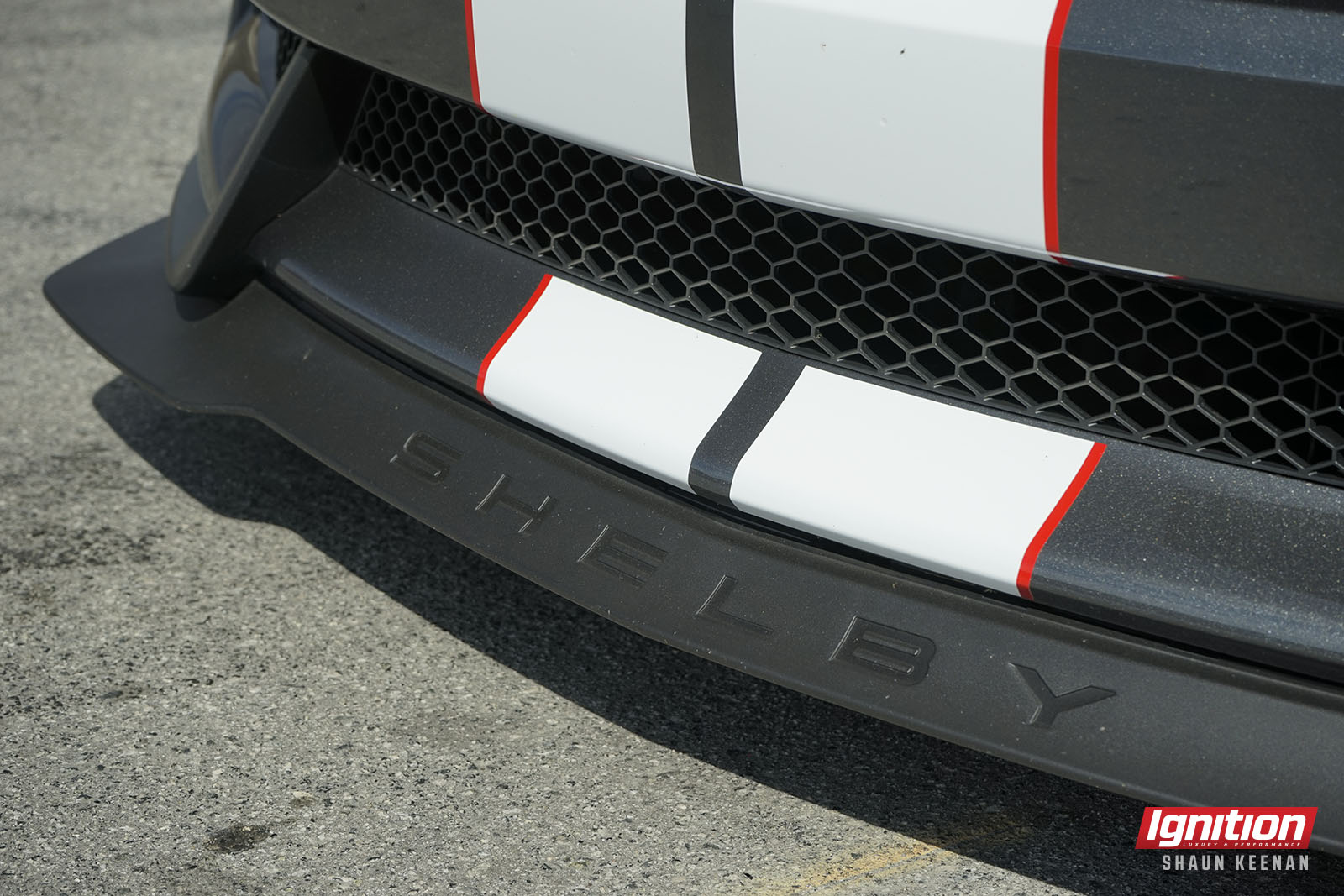
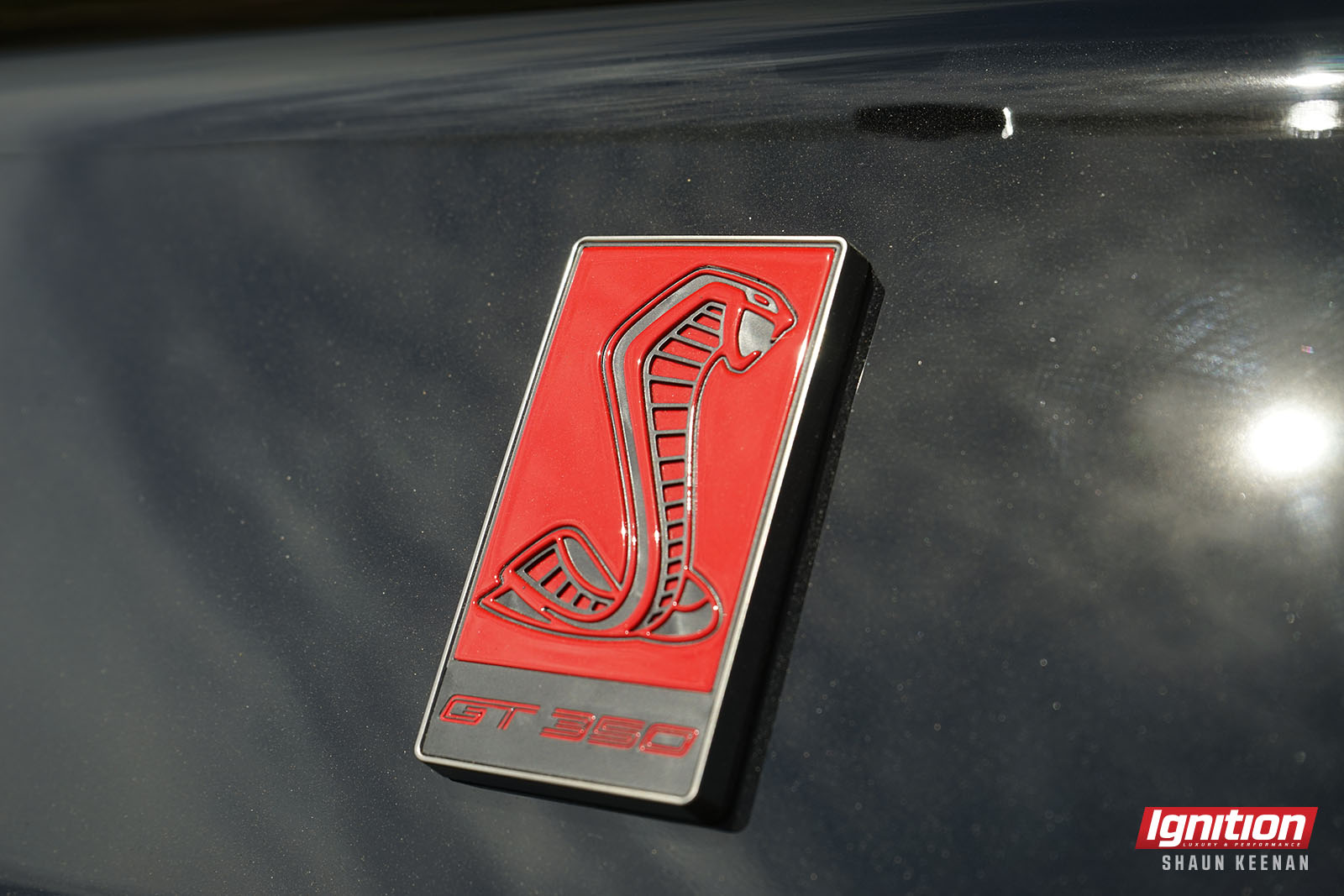

Though I have turned thousands of virtual laps in the Forza Motorsport, Gran Turismo and iRacing, this is my first time at Mazda Raceway in real life. And before long I find myself buckling into a the GT350R for a couple hot laps. Upon firing the ignition, the rumble of the exhaust hits me in the chest like a stampede of wild mustangs as I slowly exit pit lane. After rejoining the track just before turn three’s right-hander, it’s on like Donkey Kong!
The car takes off like a shot and, after just a few corners, I’m feeling comfortable and even more confident. The chassis feels well-planted and fast with virtually no understeer in any of the 11 corners. There’s also no lift because it has actual downforce, and the brakes are powerful, very consistent and maintain reliable pedal feel under hard braking. It pulls hard heading up the hill on the Rahal Straight, and it doesn’t wiggle or squirm under braking when setting up for the world famous Corkscrew. Perhaps even more impressive with respect to the brakes is that they didn’t fade or show any signs of warping at all despite a heavy workload throughout the day.
From the well-bolstered Recaro bucket seat you can tell the MagneRide suspension is on point, the 11.5-inch wide Michelins helping provide an astonishing amount of grip on the track. The EPAS steering is accurate and provides good feedback, but I still prefer the hydraulic power steering setup in the Subaru WRX STI for its sensitivity.
According to my stopwatch, my fastest lap, and my second of just two flying laps on the 3.6-kilometre (2.24 miles) long Mazda Raceway blacktop, clocked in at 1:44.5 seconds. To put this into perspective, I would have qualified for the 2015 IMSA Continental sports car race in Laguna Seca, albeit at the back of the grid. Consider though that the second fastest qualifier was a GS-class Boss 302R, which ran a 1:36 in full race configuration, and you can see there’s plenty left of time on the table. That said, the Multimatic-backed GT350R-C didn’t make its debut until the following race at Watkins Glen, but has been on pole in all three of its appearances since, and is poised to be the car to be the car to beat in 2016.
I am pretty pleased with my unofficial for-real Laguna Seca lap time. Make no mistake, the 2016 Shelby GT350R is faster than me. Faster than its predecessors too. Of all the street-legal wannabe racers I’ve driven, this is the most serious. Probably because it’s not a pretender.
It’s pretty good on the road, too. Steering, braking, accelerating (sounds amazing!) and shifting are all superb, and that clutch feels perfect! Sport mode adds more grrr, and the car actually feels quicker than base GT350 with same power – carbon fibre wheels do make a difference. The ride is a bit bumpy, but not to the point of annoyance or discomfort. Feedback through the chassis and steering wheel is excellent. Considering what it can do on the track, it’s almost hard to believe this is a street car. Sure the interior is a bit cheapish (it is a Mustang and not an R8) but the driving dynamics and actual performance more than make up for it. No smoke and mirrors here.
The 2016 Mustang Shelby GT350 will be built to demand, but Ford is expecting numbers similar to those of the last-gen Shelby GT500, which is between 4,000 and 5,000 units per year. The racier GT350R will be available in a more limited quantity, comparable in numbers to the Boss 302 Laguna Seca. The lesser model starts at CAD $62,599 with a track package available for $8,100, or the technology pack for $9,400.
The GT350R is already equipped with everything needed for the track, and starts at $79,499 with an electronics pack available for $3,800. The GT350 will be sold in North America only, and the Shelby GT350R will be sold only in the U.S. and Canada. Between the two models, Canada expects to sell at least 700 units starting, well, in the fall. So, if you want one, you better get out your snowshoes and waddle on down to your local Ford store to see if there are any left.
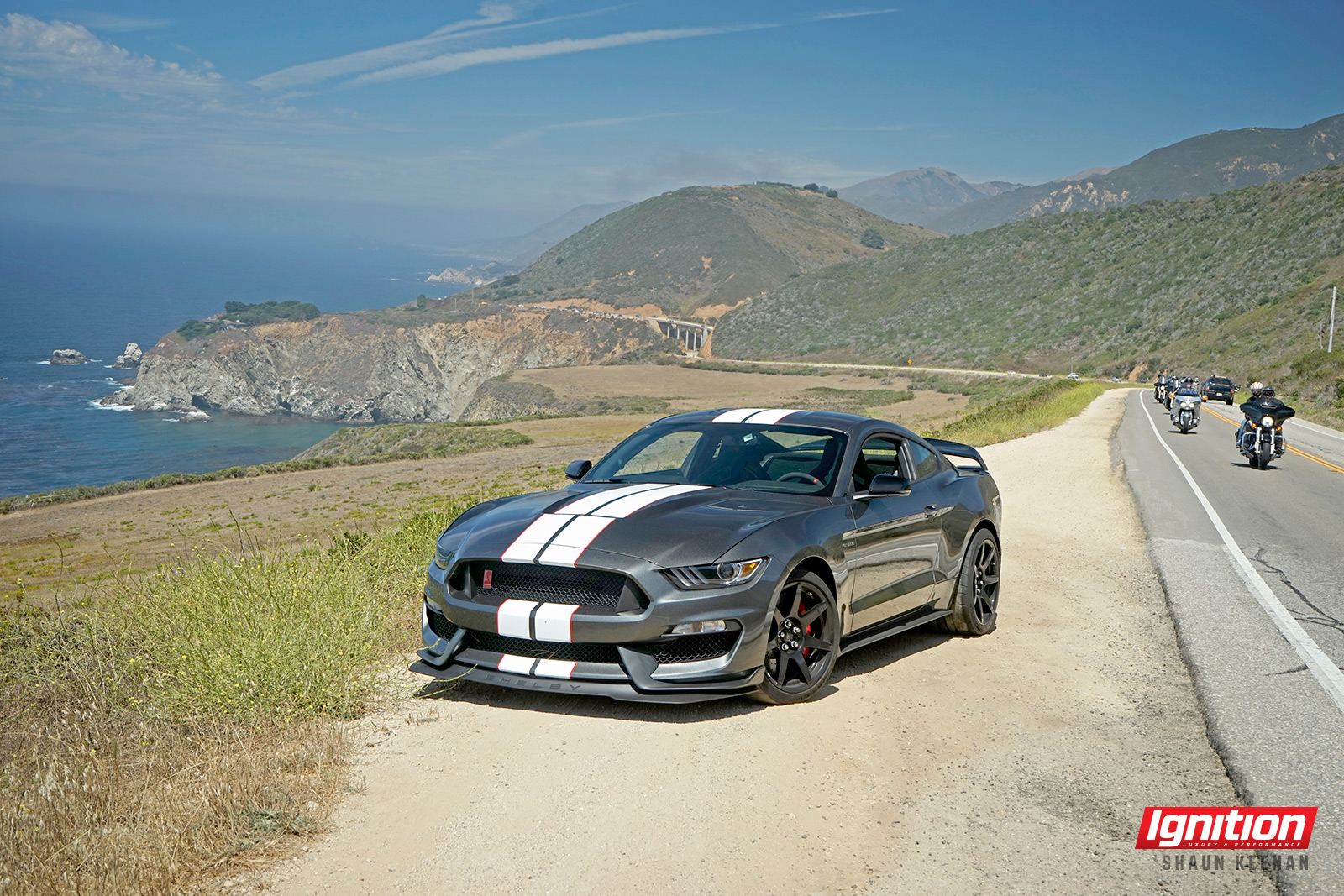
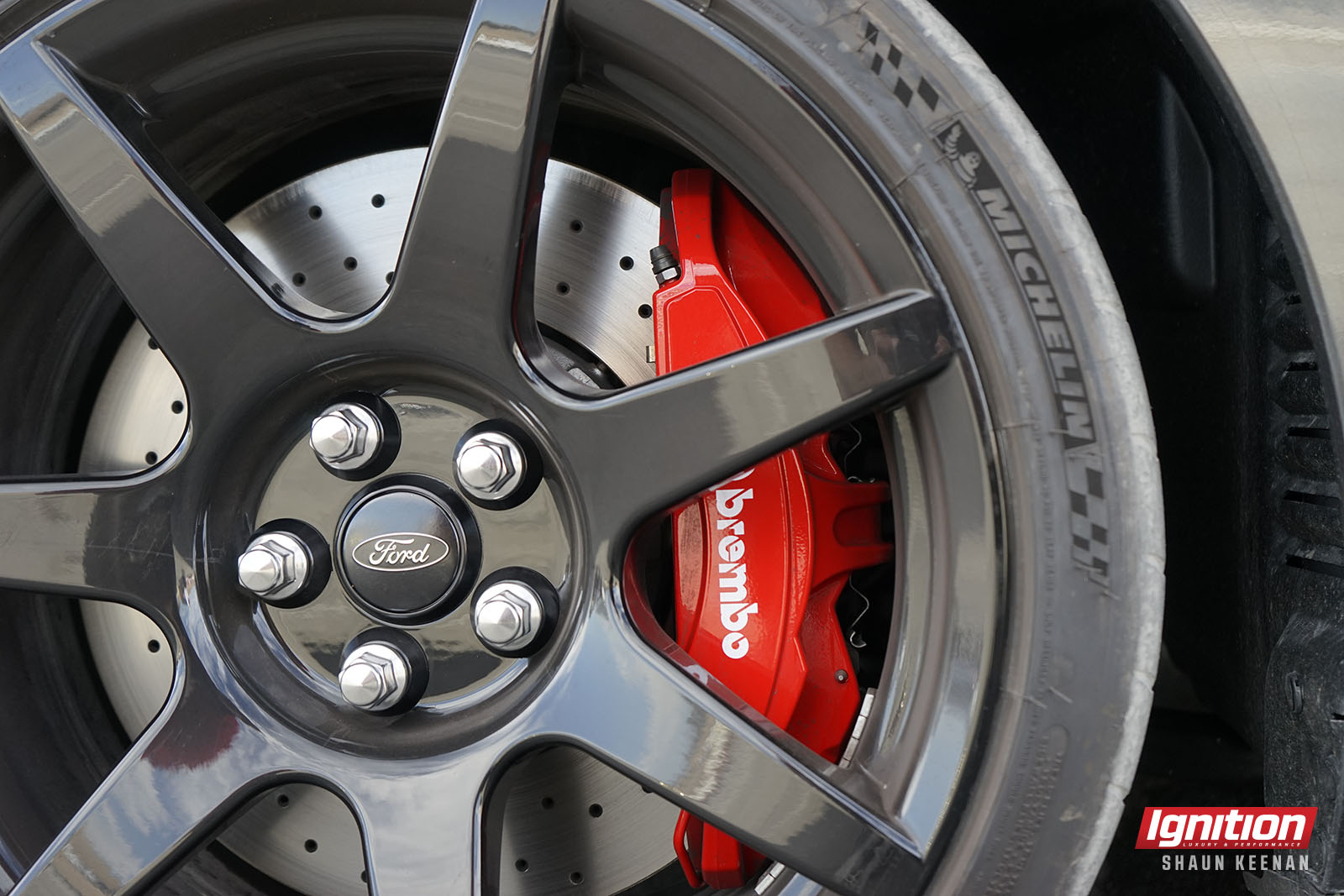

BY THE NUMBERS
$141.6/HP (CALCULATED W/ BASE MSRP)
101.1 HP/L
287.8 HP/TON
3.15 KG/HP
SPECIFICATIONS
2016 Ford Mustang Shelby GT350R
BASE PRICE: $79,499 (plus $1,650 destination and delivery)
ENGINE: 5.2L flat-plane V8
HORSEPOWER: 526 hp @ 7,500 rpm
TORQUE: 429 lb-ft @ 4,750 rpm
CONFIGURATION: Front engine / rear-wheel-drive
TRANSMISSION: 6-speed Tremec 3160 manual transmission
DRY WEIGHT: 1,658 kg
FUEL ECONOMY RATINGS (CITY / HWY.): 16.3 / 10.7 L/100 km
NOTABLE OPTIONS:
ELECTRONICS PACKAGE ($3,800) — 7-speaker audio system, SYNC 3 system, SiriusXM Radio, dual-zone electronic automatic temperature control (DEATC), universal garage door opener (UGDO), turn signal mirrors; black roof ($850); stripes ($600).
